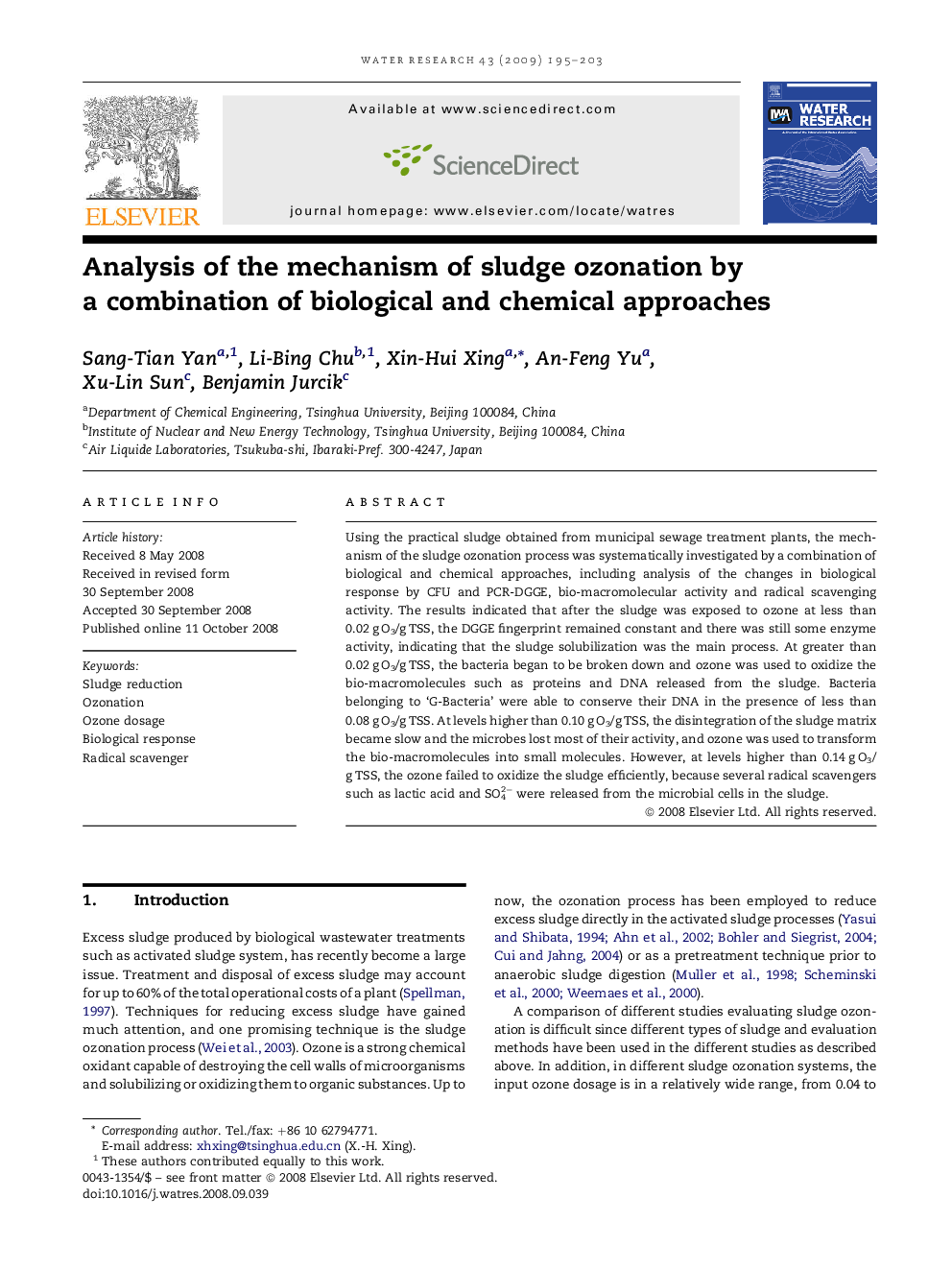| کد مقاله | کد نشریه | سال انتشار | مقاله انگلیسی | نسخه تمام متن |
|---|---|---|---|---|
| 4483282 | 1316883 | 2009 | 9 صفحه PDF | دانلود رایگان |

Using the practical sludge obtained from municipal sewage treatment plants, the mechanism of the sludge ozonation process was systematically investigated by a combination of biological and chemical approaches, including analysis of the changes in biological response by CFU and PCR-DGGE, bio-macromolecular activity and radical scavenging activity. The results indicated that after the sludge was exposed to ozone at less than 0.02 g O3/g TSS, the DGGE fingerprint remained constant and there was still some enzyme activity, indicating that the sludge solubilization was the main process. At greater than 0.02 g O3/g TSS, the bacteria began to be broken down and ozone was used to oxidize the bio-macromolecules such as proteins and DNA released from the sludge. Bacteria belonging to ‘G-Bacteria’ were able to conserve their DNA in the presence of less than 0.08 g O3/g TSS. At levels higher than 0.10 g O3/g TSS, the disintegration of the sludge matrix became slow and the microbes lost most of their activity, and ozone was used to transform the bio-macromolecules into small molecules. However, at levels higher than 0.14 g O3/g TSS, the ozone failed to oxidize the sludge efficiently, because several radical scavengers such as lactic acid and SO42− were released from the microbial cells in the sludge.
Journal: Water Research - Volume 43, Issue 1, January 2009, Pages 195–203